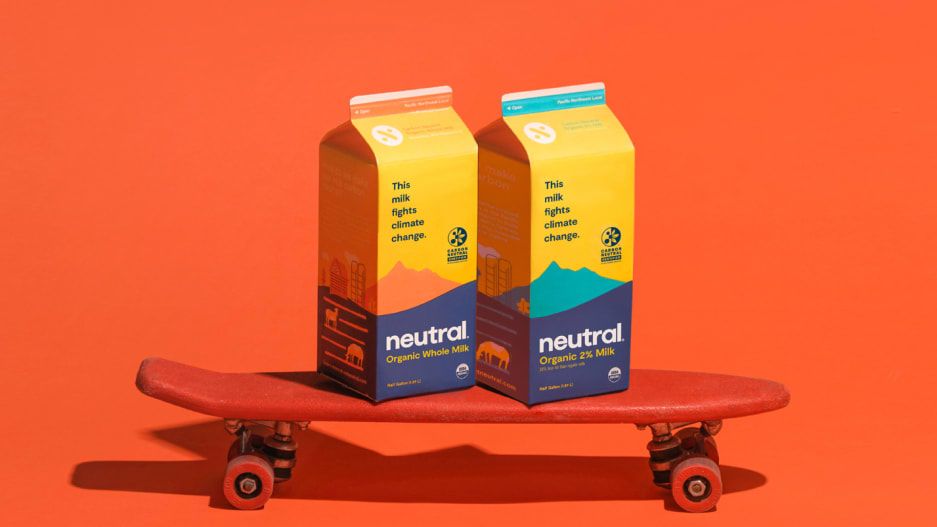
On the front of a carton of milk from the Portland, Oregon-based brand Neutral, above the brand name, the package has a short message in large print: “This milk fights climate change.” On its website, the company lists the number of pounds of CO2 that were offset to give the milk that tagline—12 pounds, in the case of a carton of organic 2% milk. The company works with dairies to reduce emissions as much as possible, and then offsets the rest, making each product carbon neutral.
“Because consumers are buying this milk, we’re investing directly in dairy farms on climate reduction technologies and projects,” says Marcus Lovell Smith, CEO of Neutral, which claims to be the first carbon-neutral food brand in the U.S., though others are also now offsetting their footprints. (Some larger companies plan to soon hit the goal, like the salad chain Sweetgreen; a larger dairy brand, Stonyfield Organic, plans to have a carbon-positive dairy supply chain by the end of the decade.) Neutral announced today that it raised a seed round of funding led by Breakthrough Energy Ventures, the climate-focused VC fund founded by Bill Gates. The milk also recently went on shelves nationwide at Whole Foods. “All in all, dairy accounts for 3% of all global emissions, more than the entire aviation sector, and by working with farmers to reduce emissions, Neutral Foods is addressing one of the largest areas for climate impact,” says Carmichael Roberts, business lead of Breakthrough Energy Ventures’ investment committee.
The company worked with researchers to study the carbon footprint of dairy, from the fertilizer used to grow cattle feed, to the methane in cow burps and manure, to the power used on the farm, delivery trucks, and bottling plants, and even what happens to empty milk cartons. Then it started partnering with dairy farmers, paying for interventions that farmers otherwise might not be able to afford. While some dairies have already taken significant steps to shrink their carbon footprints, most still have ample room to change.
Earlier this fall, the company worked with three family-owned dairy farms in Oregon to seed pastures with a mix of plants that are rich in tannins—something that the cows like to eat, and that can help reduce methane, a potent greenhouse gas, when cows belch. The company is also working with farmers to install new systems for managing manure, another source of methane. On some farms, it plans to plant trees on pastures to help offset some emissions. Other solutions, like seaweed additives that can go in cattle feed to also reduce methane, are being considered for the future. “We have a pretty technology-agnostic approach,” says Smith.
To offset remaining emissions, the brand buys certified offsets from other parts of the dairy industry, including larger dairies that use methane digesters, equipment that turns manure into energy, funding the expansion of digester use on those farms. The company may also invest in “regenerative” agriculture solutions that may sequester carbon in soil on farms, such as planting cover crops, though Smith says that more research is still needed to understand exactly how much carbon those techniques can sequester and how long it stays underground.
The company plans to later sell carbon-neutral versions of other types of food, but wanted to begin with dairy because of its importance in terms of the climate. And even though plant-based dairy is growing quickly in sales, most consumers still buy the version from cows. “We started in dairy because it has a big footprint,” Smith says. “But also because next you know, I think still to this day, 93% of American households have milk in their refrigerator. So it’s a pretty universal foodstuff, and therefore it’s an important place to start.”
























